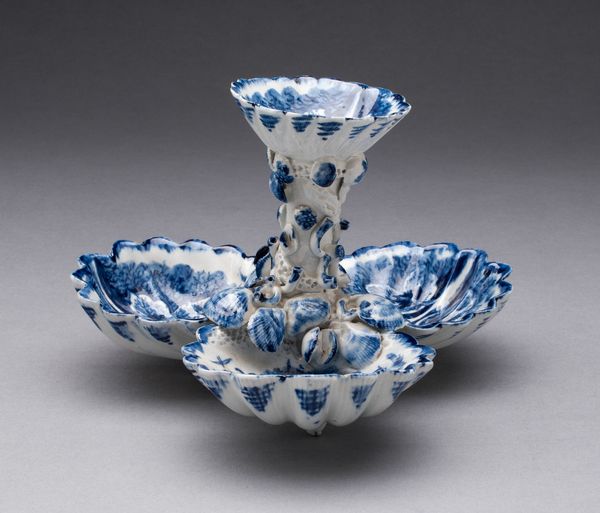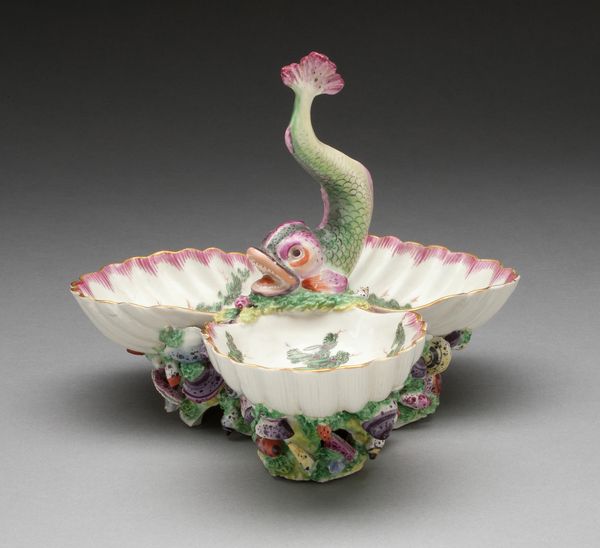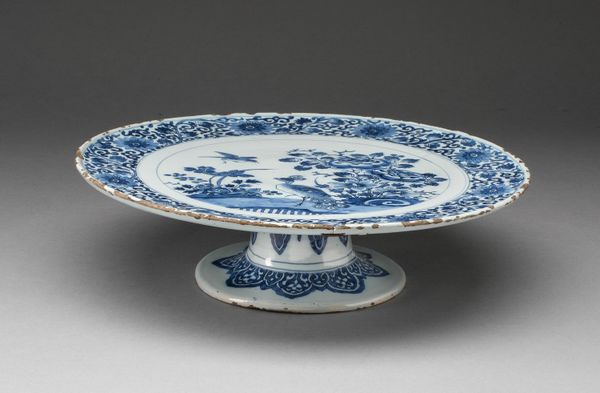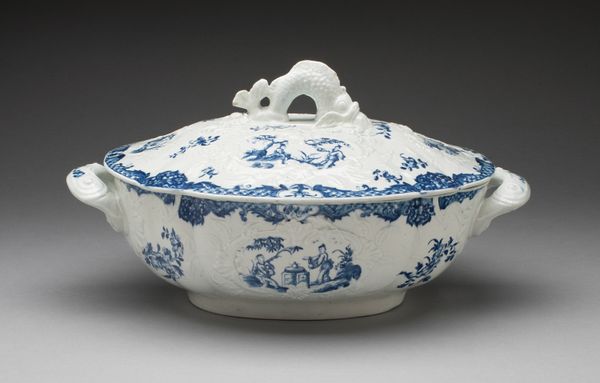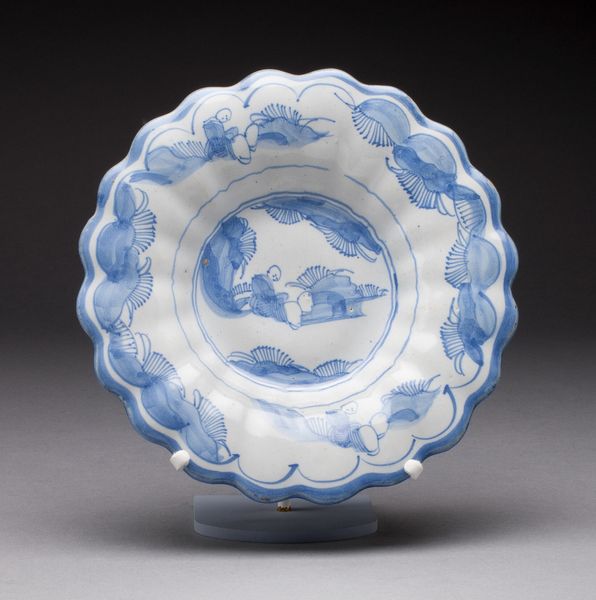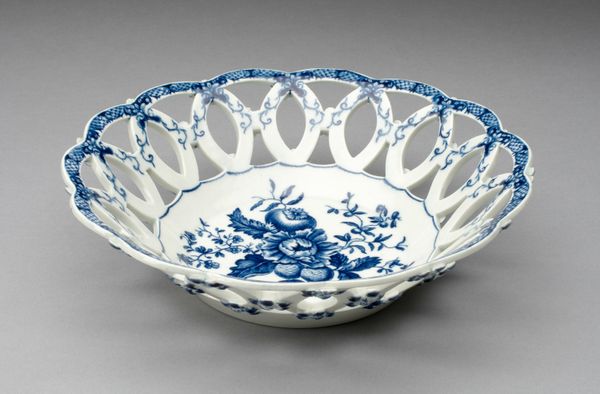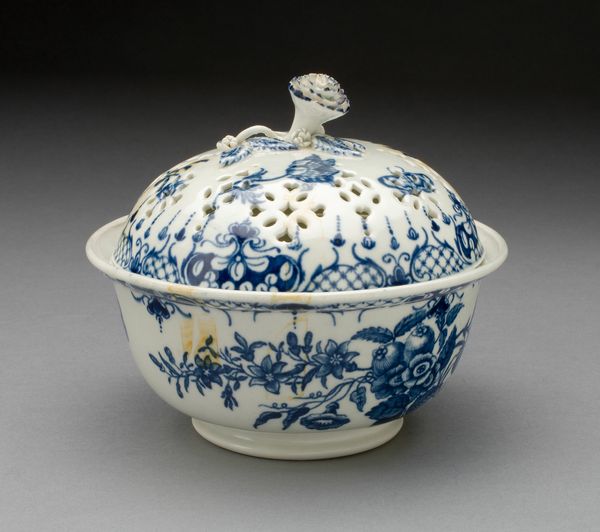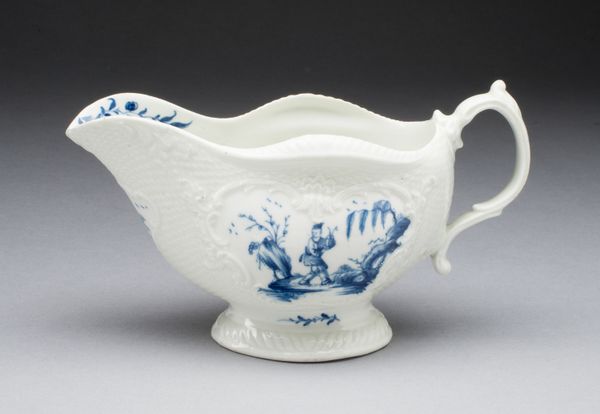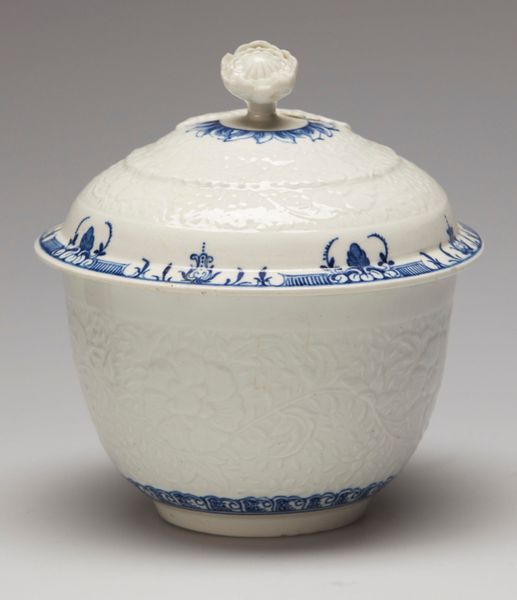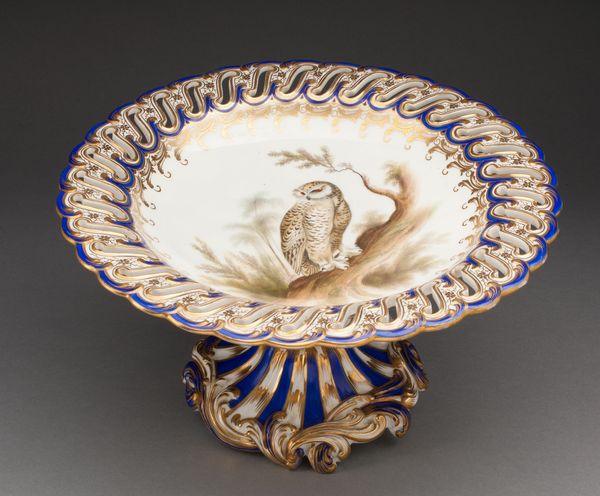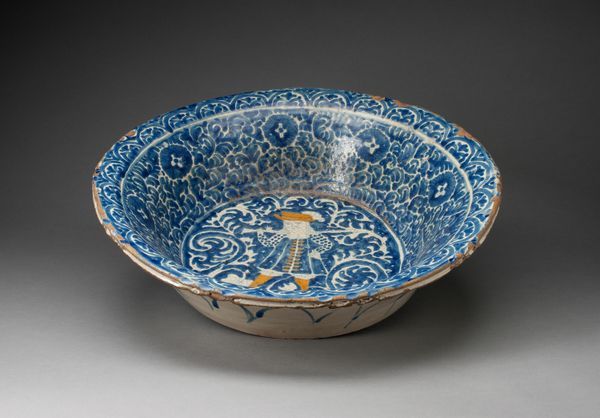
ceramic, porcelain, sculpture
#
ceramic
#
porcelain
#
sculpture
#
ceramic
#
decorative-art
#
rococo
Dimensions: 16.5 × 22.2 cm (6 1/2 × 8 3/4 in.)
Copyright: Public Domain
Editor: Here we have the "Sweetmeat Stand," crafted around 1770 by the Worcester Royal Porcelain Company. It's made of ceramic and porcelain. The quirky, almost playful design with the dolphin centerpiece gives it a lighthearted feel. How would you interpret this work considering its historical context? Curator: Well, looking at this "Sweetmeat Stand" from a historical perspective, it represents much more than just a serving dish. Think about the late 18th century—a period of burgeoning global trade and colonial expansion. Porcelain itself was a highly prized commodity, and its presence on a table signified wealth and sophistication. Notice the Rococo style; how do you think its motifs would have functioned at the time? Editor: It's very ornate! The dolphin, the shells, it feels like it is referencing maritime exploration or the bounties of the sea? Curator: Precisely. It speaks to the power and prestige associated with naval power and access to exotic goods. Remember, sugar, used to make sweetmeats, was itself a product of colonial exploitation. This seemingly innocent table piece subtly alludes to complex power dynamics and global trade networks. How do you see it functioning in the domestic sphere? Editor: So, it's both a functional object and a symbol of status. It must have been quite a conversation starter for the people using it, or, at least, a symbol of power. Curator: Exactly. This “Sweetmeat Stand” isn’t just about aesthetics; it's a material representation of social and political structures of its time. Reflect on the act of displaying it; whose gaze mattered, and what was being communicated through it? Editor: That’s fascinating, seeing how something so seemingly simple can hold so much historical weight and cultural information. It's made me think a lot more deeply about the role of objects and art in power dynamics! Curator: It demonstrates how crucial it is to interpret even the most ornamental pieces through the lens of their social and historical conditions, in terms of production and consumption.
Comments
No comments
Be the first to comment and join the conversation on the ultimate creative platform.
